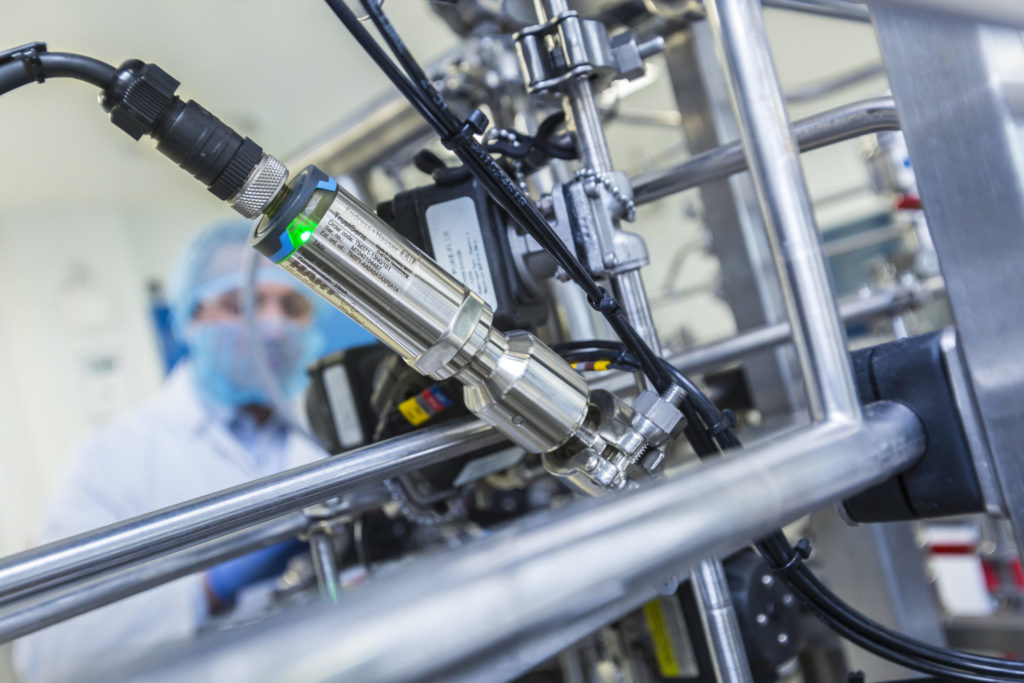Q&A: Clean and safe water with Endress+Hauser’s disinfection sensors
In today’s world, ensuring clean and safe water is more critical than ever. This Q&A with Endress+Hauser’s Liquid Analysis Product […]
The life sciences industry is one of the most heavily regulated in the world, with authorities requiring drug manufacturers to continuously perform instrument calibration, such wet calibration, along with verification procedures. To confirm this is done, manufacturing compliance is checked at regular intervals by third-party inspectors to ensure high process quality and subsequent consumer safety.
Documented calibrations maintain instrumentation measurement integrity, which in turn validates the manufacturing process. But calibration is not foolproof, and it can increase downtime, particularly when traditional offline calibration methods are used. We want to talk about other options.
Wet calibration involves immersing a sensor – such as a pH or conductivity probe- in a reference solution and checking it for accuracy. This process commonly fills the legal requirements for regular checks on analytical sensors. Wet calibration is easily performed in a laboratory setting, where the environment is controlled, the sensor is easy to access, and the necessary equipment is at hand. But these conditions are typically not found in a production system, so the same sensors and calibration procedures executed in a lab often do not work in production.

Wet calibration has another downside in manufacturing plants because sensors must typically be removed from the process and sent to a laboratory for verification, then shipped back to the plant and reinstalled following instrument calibration. Through this process, transport or mishandling damage may occur and remain undetected, leading to situations where recently calibrated instruments do not perform according to lab-verified results.
While onsite or mobile calibration units mitigate shipping risks, they do not eliminate the need to open primary process loops and deactivate electronics while removing sensors from service, which introduces risks for equipment contamination and incorrect rewiring, respectively.
In addition to the risks associated with offline calibration, it can result in hundreds of hours of downtime every year. Filling out the required paperwork for each calibration is time consuming, and opportunities for data entry errors lie around every bend.

Modern smart sensors store their calibration data directly, and some are even equipped to perform self-calibration, like Endress+Hauser’s TrustSens pharmaceutical grade steam-in-place temperature sensor. This sensor incorporates a high-precision reference, known as a “Curie Point,” that experiences an abrupt ferromagnetic change at a certain “Curie Temperature.” The change in properties can be detected electronically, triggering an automated process value checkpoint upon reaching the Curie Temperature.
This type of sensor automatically creates a digital calibration report each time the Curie Temperature is reached during production by comparing its measured primary process value at the immediate moment to the Curie Temperature. If the process value deviates outside acceptable boundaries, the instrument issues an alert to personnel, indicating the need for sensor replacement.
While self-calibration techniques aren’t possible for every process variable measurement, numerous other advances are streamlining instrument calibration procedures and increasing measurement integrity, including:
Today’s analytical instruments have built-in capabilities to diagnose problems, perform calibration, and generate auditable reports, easing calibration tasks and reducing plant downtime. When online calibration is not feasible, fewer and quicker offline calibrations lead to better overall equipment effectiveness.
The combination of these Endress+Hauser smart instrumentation characteristics empowers plant personnel to achieve maximum uptime, while maintaining regulatory compliance and upholding the highest degree of consumer safety.
In today’s world, ensuring clean and safe water is more critical than ever. This Q&A with Endress+Hauser’s Liquid Analysis Product […]
Greg Pryor is the Temperature Product Marketing Manager at Endress+Hauser USA. To help answer some questions surrounding temperature transmitters, we […]
In recent years, the biopharmaceutical industry has increasingly recognized the value of flexible manufacturing to meet variable production demands. This […]
Comments